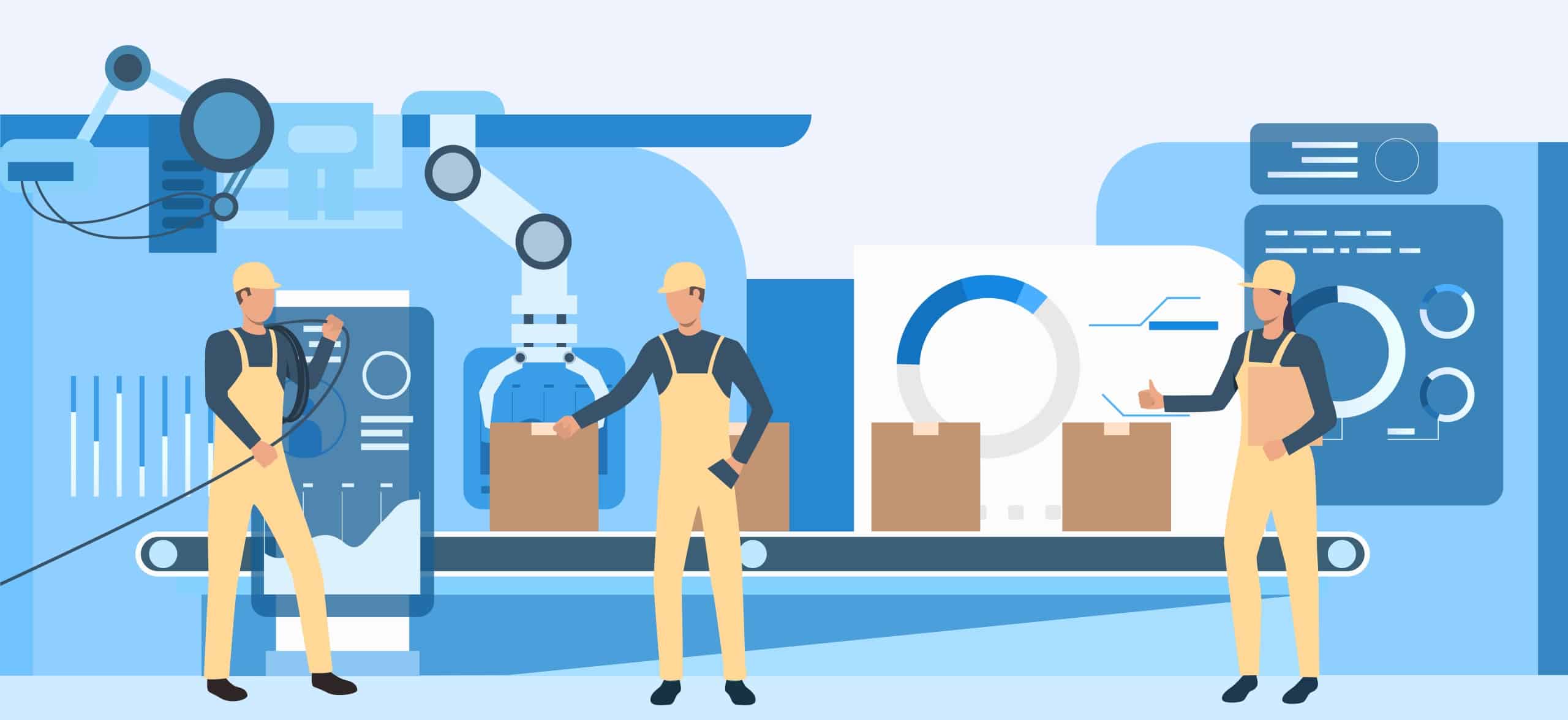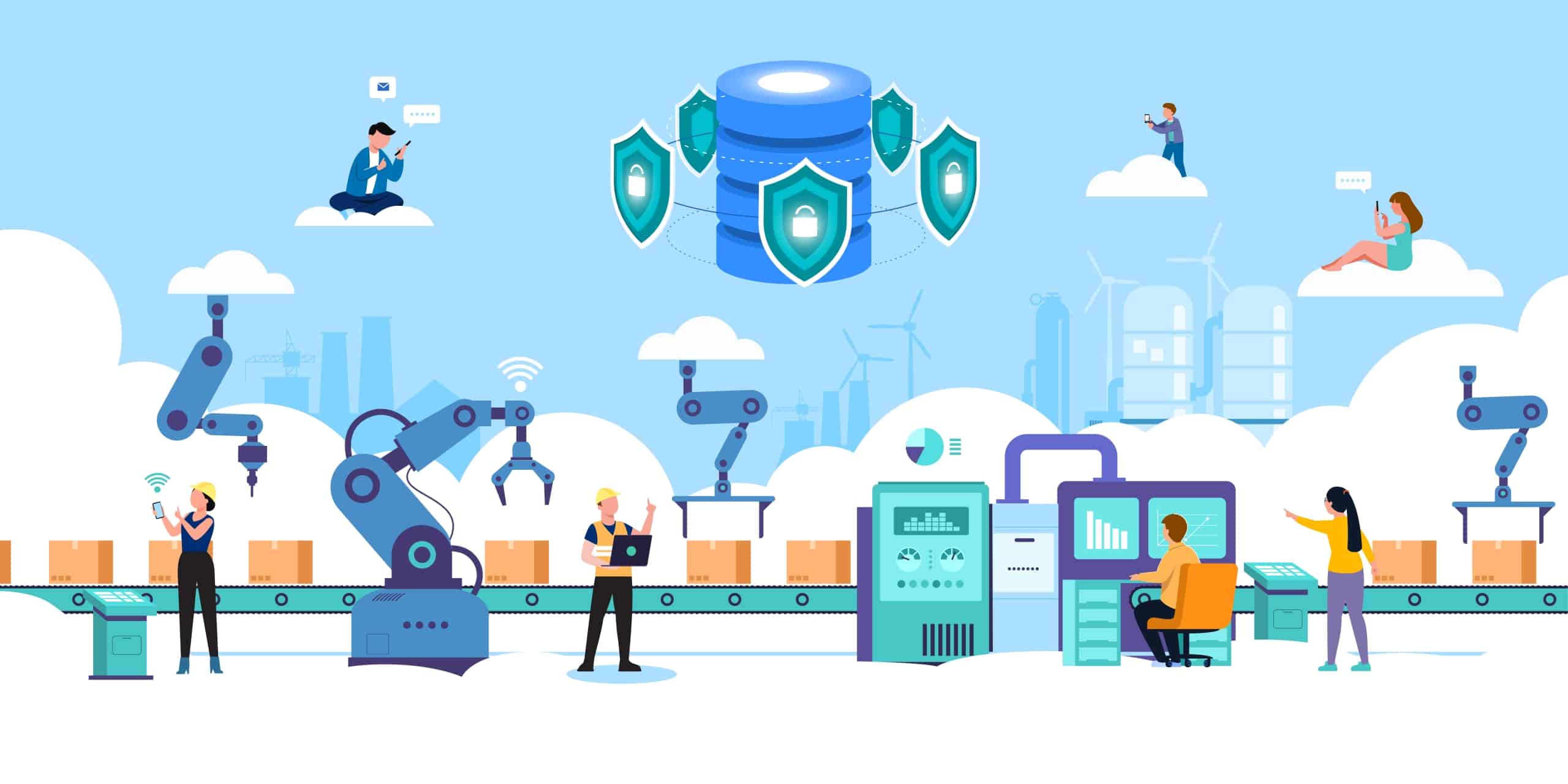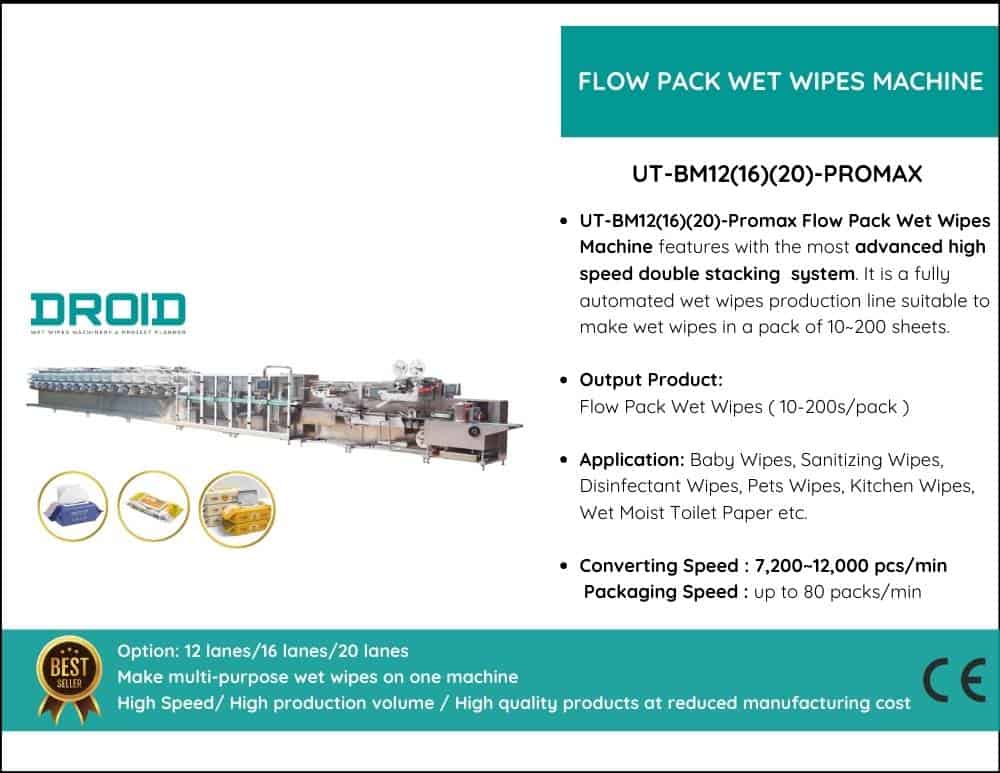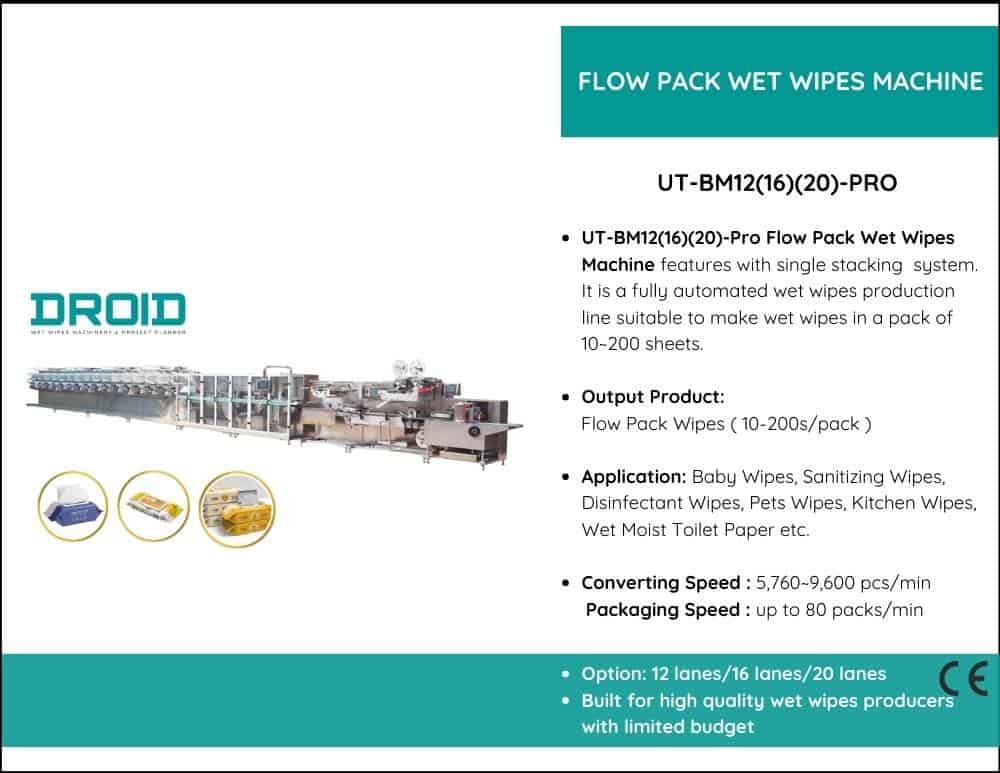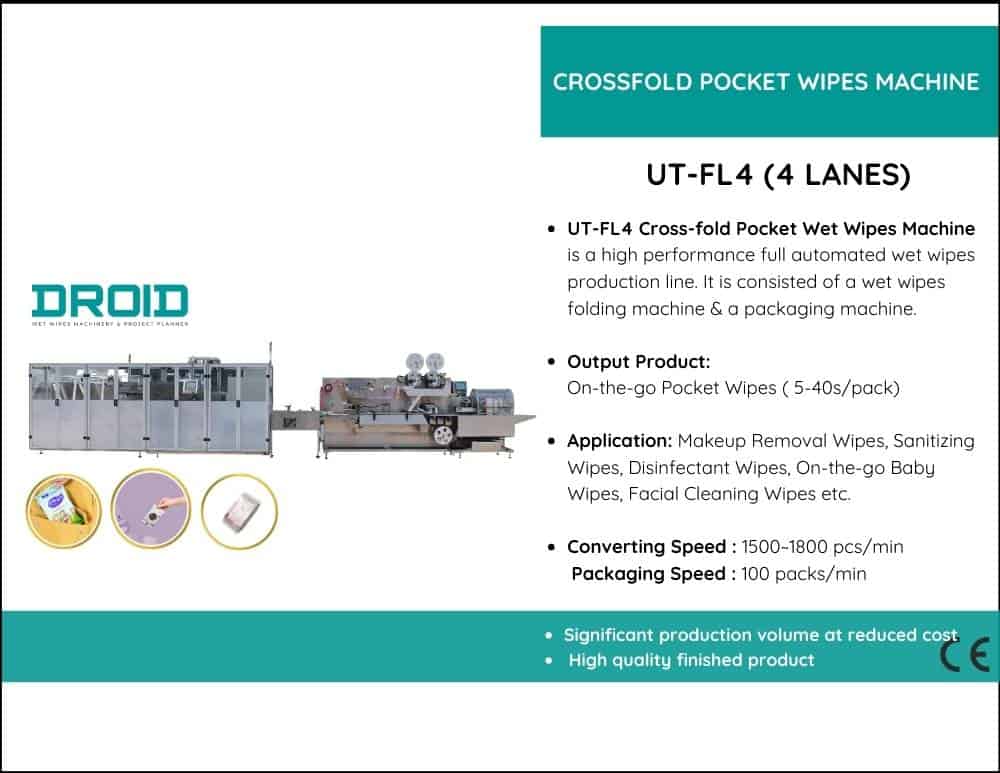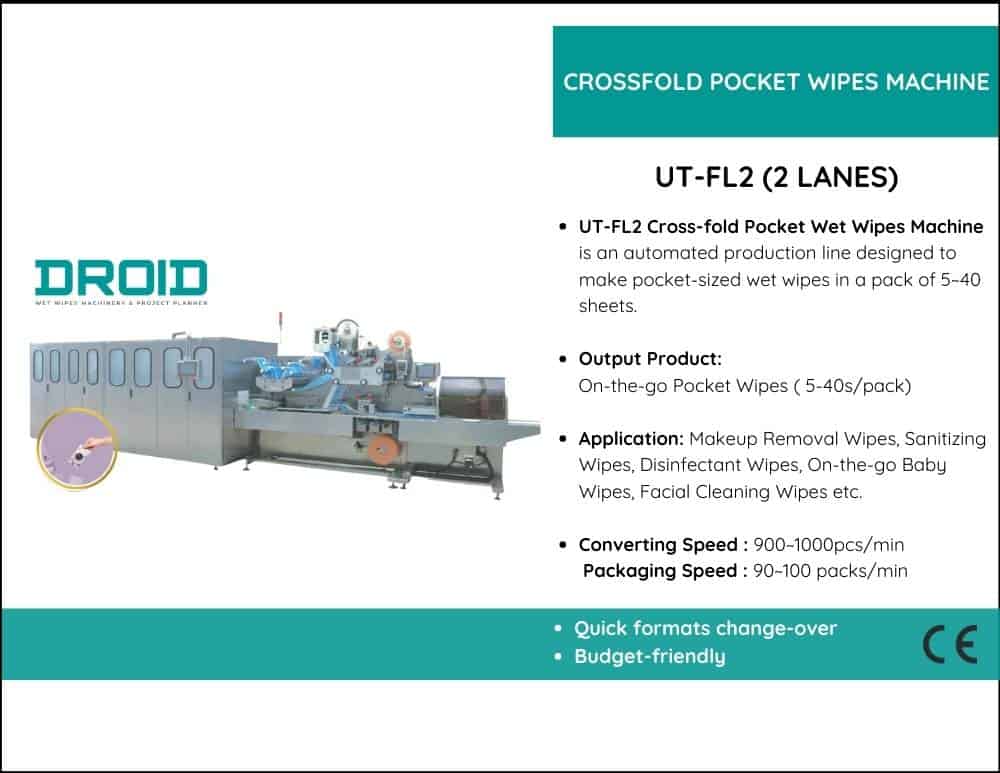Undoubtedly, switching to low-energy machinery in the production of wet wipes has advantages including lower costs, increased sustainability, and increased operational effectiveness. Wet wipes manufacturers must, however, deliberately handle the difficulties that often accompany the adoption of new technologies. Businesses may get the most out of their investment in low-energy gear by comprehending and overcoming these challenges.
1. Expensive initial outlay
The high initial cost of low-energy equipment is one of the main obstacles to their adoption. When compared to traditional equipment, advanced gear with energy-efficient technology is often more expensive. Small and medium-sized businesses (SMEs) may find this expense to be a major turnoff.
Solution: Wet wipes manufacturers should look at funding solutions including government incentives for energy-efficient technologies, payment plans, or equipment leasing to get beyond this obstacle. The initial investment may also be justified by emphasizing the long-term return on investment (ROI), which includes lower energy bills, fewer maintenance costs, and longer equipment lifetime. To spread the expense, producers might also progressively replace obsolete equipment with new machinery.
2. Skill Development and Employee Training
Advanced technologies that need specific expertise to operate, such as IoT connection, smart sensors, and AI-driven controls, are often included in low-energy devices. When switching to these contemporary methods, workers used to old equipment may encounter a challenging learning curve.
Solution: To provide operators and maintenance personnel with the abilities they need to operate new machinery efficiently, extensive training programs are crucial. Wet wipes manufacturers and equipment providers may collaborate to offer user manuals, troubleshooting instructions, and on-site training. Furthermore, continuous supplier support—like regular seminars or virtual help—can guarantee a seamless transition and boost employee trust.
3. Combining Current Production Lines
It may be difficult to integrate low-energy machines into an existing production line, especially if the new machinery necessitates modifying processes, layouts, or supporting systems. There may also be compatibility problems with outdated equipment.
Solution: Before incorporating new machinery, wet wipes manufacturers should thoroughly evaluate their present production system. It is essential to collaborate closely with equipment vendors to modify machines for smooth integration. Since many contemporary low-energy devices are modular, they may easily be added to existing configurations. Pilot testing on a single production line as the first step in a gradual integration process may aid in the early detection and resolution of any problems.
4. The alleged danger of untested technology
Some firms could be hesitant to purchase low-energy machinery because they have doubts about its performance, dependability, or suitability for their particular production needs. Adoption may be hampered by the notion of new or experimental technologies.
Solution: In order to verify the performance of low-energy devices, wet wipes manufacturers might ask suppliers for case studies, testimonies, or demonstrations. Working together with peers in the sector who have successfully used these technologies may provide confidence and insightful information. Additionally, perceived risks may be reduced by choosing devices with warranties and strong after-sales assistance.
5. Juggling Production Objectives While Transitioning
Production schedules may be temporarily disrupted by the switch to low-energy machinery, especially during installation, testing, and early operation. It takes careful balance to adopt new technologies while yet meeting continuous production needs.
Solution: To reduce interruptions during the changeover, preparation is essential. Wet wipes manufacturers have to plan for testing and installation at times when production demand is lower or introduce new equipment gradually. Creating backup plans, such as keeping up with backup systems or contracting out short-term manufacturing, may assist in guaranteeing continuous operations.
6. Opposition to Change in Culture
A typical problem when implementing any new technology is resistance to change. Both management and employees may be hesitant to embrace low-energy machines because they are unfamiliar with them or because they are worried about how automation will change their work duties.
Solution: Employee participation in the adoption process and open communication are essential. Buy-in may be increased by outlining the advantages of low-energy machinery, such as improved safety, simpler processes, and corporate sustainability objectives. Job security worries may be allayed by offering practical experience and stressing that technology enhances human skills rather than replacing them.
7. Availability of Maintenance and Spare Parts
Advanced parts that may not be easily accessible locally are often used in low-energy devices, which might cause delays in maintenance or repairs. If some components need to be imported, wet wipes manufacturers can be concerned about lengthy downtime.
Solution: It’s critical to choose trustworthy vendors with a robust local or international distribution network. Wet wipes manufacturers must bargain for service contracts that provide technical assistance and prompt access to replacement components. Delays may be further reduced by creating an inventory of essential spare parts and making sure maintenance personnel are properly educated.
8. Assessing the Impact of Sustainability and ROI
It may be difficult to quantify the cost savings, productivity gains, and environmental effects of low-energy devices, especially when adoption is still in its early phases. Stakeholders could doubt the investment’s worth in the absence of precise data.
Solution: To monitor the operation of low-energy equipment, wet wipes manufacturers should set precise benchmarks and key performance indicators (KPIs). These might include lowering carbon emissions, increasing manufacturing output, and reducing energy use. The machines’ IoT-enabled data analytics can streamline this procedure and provide real-time insights to show a return on investment.
Although there are obstacles to overcome when using low-energy machinery in the production of wet wipes, they may be successfully handled with careful preparation, supplier cooperation, and training. Overcoming these obstacles is desirable because of the long-term advantages, which include increased efficiency, market competitiveness, sustainability, and cost savings. Wet wipes manufacturers may effectively switch to energy-efficient technologies and set themselves up for a more lucrative, environmentally friendly future by carefully addressing issues.




